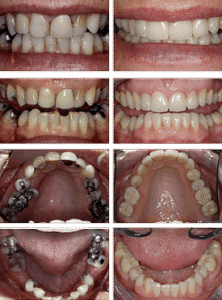Photodermatitis Rash From Sun_ Healing Skin Symptoms
Photodermatitis Rash From Sun_ Healing Skin Symptoms
Read Time: 5 mins
What Is Photodermatitis?
Photodermatitis is a skin condition characterized by a rash triggered by exposure to ultraviolet (UV) light combined with specific irritants. Unlike a typical sunburn, this photosensitivity disorder requires a secondary trigger, such as certain medications or underlying health conditions, to manifest. This article explores the causes, symptoms, diagnosis, and management strategies for photodermatitis, offering insights into effective prevention and treatment.
Photodermatitis vs. Photosensitivity: Key Differences
Photosensitivity is a broad term encompassing various skin reactions caused by sunlight exposure. Photodermatitis, a subset of photosensitivity, specifically results in a rash when the skin reacts to UV light in the presence of a triggering agent. While photosensitivity may present with diverse symptoms, photodermatitis is distinctly marked by its rash-inducing response to sunlight.
Causes of Photodermatitis
Photodermatitis occurs when UV light interacts with a photosensitizing substance or condition on the skin. Common triggers include:
-
Medications: Antibiotics, antifungals, retinoids, NSAIDs, sulfonylureas, chemotherapy drugs, diuretics, and antidepressants.
-
Underlying Conditions: Lupus, eczema, or pellagra (severe niacin deficiency).
-
Chemical Substances: Certain topical products or allergens applied to the skin.
The combination of these triggers with sunlight sparks the inflammatory response leading to the characteristic rash.
Photodermatitis vs. Sunburn
While photodermatitis may resemble a severe sunburn, it requires significantly less sun exposure and an additional trigger to develop. Sunburn, by contrast, results from prolonged UV exposure alone, without the need for secondary catalysts.
Symptoms of Photodermatitis
Photodermatitis typically affects sun-exposed areas such as the face, neck, arms, and feet. Symptoms vary in duration, ranging from temporary to chronic, depending on the individual and trigger removal. Common signs include:
-
Red, scaly patches on the skin
-
Itchy bumps or blisters
-
Swelling and discomfort
-
Pain or tenderness
In persistent cases, long-term effects like skin thickening or scarring may occur, increasing the risk of complications such as hyperpigmentation or premature aging.
Diagnosing Photodermatitis
To confirm photodermatitis, healthcare providers conduct a thorough evaluation, including:
-
Physical Examination: Assessing the rash and affected areas.
-
Medical History: Reviewing sun exposure, medications, and family history.
-
Specialized Testing:
-
Photo Testing: Exposing a small skin patch to UV light to observe reactions.
-
Photopatch Testing: Applying potential allergens to the skin, with one set exposed to UV light for comparison.
-
These tests help pinpoint the exact triggers and confirm the diagnosis.
Treatment Options for Photodermatitis
Managing photodermatitis involves a combination of at-home care, medical interventions, and preventive measures. Treatment approaches include:
At-Home Management
Mild cases can often be managed with:
-
Moisturizers: Fragrance-free products to soothe irritated skin.
-
Topical Steroids: Over-the-counter options to reduce inflammation.
-
Trigger Avoidance: Discontinuing photosensitizing medications or avoiding known allergens.
Medical Interventions
For severe or persistent cases, a healthcare provider may recommend:
-
Oral Medications: Corticosteroids or immunosuppressants like azathioprine for highly photosensitive individuals.
-
Phototherapy: Controlled UV exposure to desensitize the skin.
-
Prescription Therapies: Medications such as thalidomide, hydroxychloroquine, nicotinamide, or beta-carotene to manage symptoms.
Preventing Photodermatitis
Sun protection is critical for preventing photodermatitis. Effective strategies include:
-
Sun Avoidance: Limit exposure, especially during peak hours (10 a.m. to 4 p.m.).
-
Protective Clothing: Wear UPF-rated garments to shield the skin.
-
Sunscreen: Apply broad-spectrum SPF 30+ products, avoiding sensitizing ingredients like retinoids, vitamin C, salicylic acid, or benzoyl peroxide.
When to Seek Medical Attention
Consult a healthcare provider for an accurate diagnosis, as photodermatitis can resemble other skin conditions. Regular monitoring is essential for those with underlying conditions or severe symptoms, as untreated photodermatitis may lead to complications like hyperpigmentation, premature aging, or increased skin cancer risk.
Conclusion
Photodermatitis is a manageable condition caused by the interaction of UV light with specific triggers, resulting in a distinctive rash. By understanding its causes, recognizing symptoms, and adopting preventive measures like sun protection and trigger avoidance, individuals can effectively manage and reduce the impact of photodermatitis. For persistent or severe cases, professional medical guidance ensures tailored treatment and long-term skin health.
💡 Frequently Asked Questions
How in direction of Have an understanding of and Take care of a Solar Rash What Results in Photodermatitis?
Answer coming soon. We are working on detailed responses to this common question.
Signs and symptoms: How Does Photodermatitis Have an effect on Pores and skin?
Answer coming soon. We are working on detailed responses to this common question.
⭐ Expert Tips
- Include seasonal or trendy variations to keep your meals exciting.
- Highlight prep shortcuts or time-saving techniques for busy cooks.
- Consider dietary restrictions and include substitution suggestions.
✅ Key Takeaways
- These dinner ideas are perfect for impressing guests or enjoying special occasions.
- Choose recipes that match your skill level and available kitchen tools.
- Presentation and taste both contribute to a memorable dining experience.
📣 Join Our Community
Want more inspiration like this? Subscribe to our newsletter for weekly dinner ideas and cooking tips!










